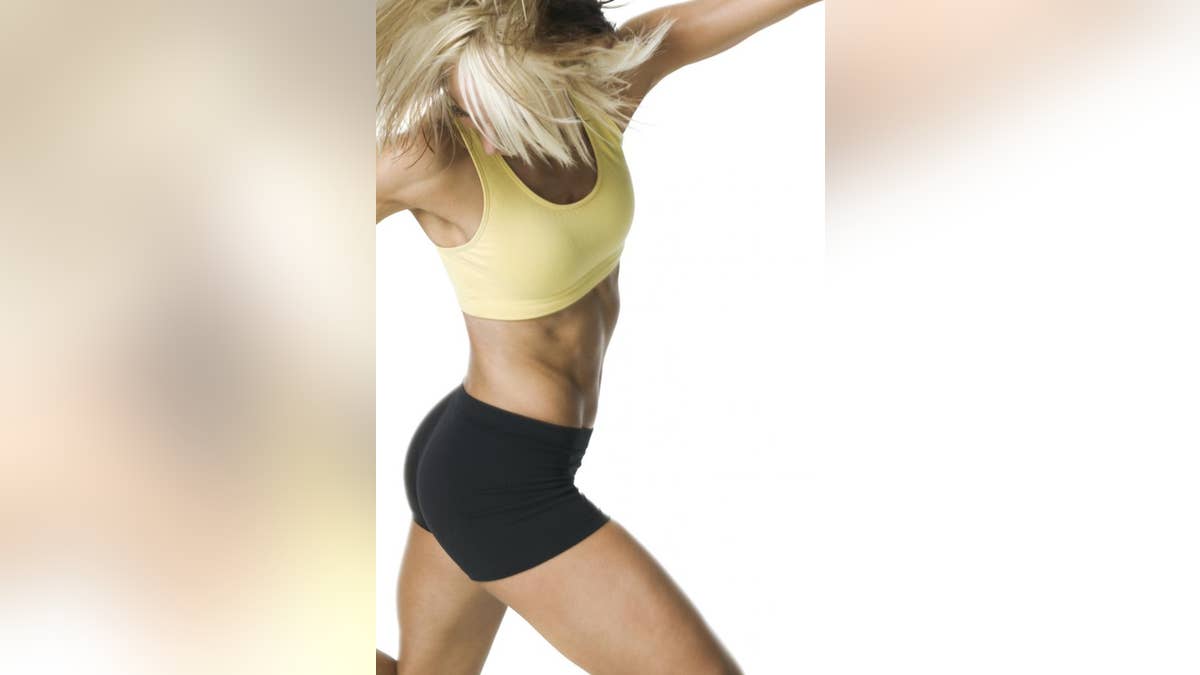
On your morning jog, you can't help but notice how many women blow past you. During yoga, you know it's not zen to compare yourself, but you wonder how your neighbor to the right bends herself into those shapes.
Sound familiar? We all want to know how we measure up — and that's actually a good thing. "Exercisers do better when they test — and retest — themselves," says Kevin Asuncion, a National Academy of Sports Medicine certified personal trainer. "Feedback motivates you when it's positive and helps redirect your efforts when it's not."
That's why it's important to assess your cardio power, strength and flexibility: the three pillars of physical fitness. Put yourself to the test, then use the strategies here to improve your score on any (or all!) fronts.
Are you aerobically fit?How to find out: Run two miles
The two-mile run is among the tests the U.S. military uses to evaluate a potential serviceperson's fitness level. Why two miles? "It's long enough to challenge your endurance, but short enough to allow you to really push yourself," explains Jason Fitzgerald, founder of StrengthRunning.com.
Try it. Use your car's GPS to chart a two-mile course. Warm up with 10 minutes of easy jogging, then hit the starting line. Time yourself with a stopwatch; go as fast as you comfortably can.
Score it. While a finish time of 17:30 is enough for servicewomen ages 37 to 51 to pass the test, breaking 18 minutes is considered above average for the rest of us in that age range.
Get faster. To build up speed, add intervals — short bursts of all-out effort — to your cardio sessions. Since they push your heart and lungs to work harder than they're used to, they deliver faster results than if you were to continue at your regular pace. "We used to think intervals were only for the super fit because they're so difficult, but they can benefit everybody," says Michael Ross, MD, medical director of the Rothman Institute's Performance Lab in Cherry Hill, New Jersey.
In a study of cyclists, Canadian researchers found that working out with intervals increased an exerciser's pace by 10 percent, on average, in two weeks. Dr. Ross says you can also reap the rewards with running: After warming up, sprint as fast as you can for 30 seconds, then walk or rest for four minutes and repeat. Do this twice a week, aiming for four sprints the first time you do it. Then add an extra sprint every other time you do the routine.
Are you strong?How to find out: Do an overhead squat
An old-fashioned overhead squat is the best way to assess strength since it challenges your entire body, Asuncion says. "It also requires neuromuscular coordination (how well the muscles throughout your body work together), which transfers beyond just the squat to improve strength throughout your body."
Try it. Standing with feet shoulder width apart, hold an unweighted bar above your head, arms extended. Pressing into your heels, slowly bend your knees as you push hips back to lower into a squat, thighs parallel to the ground; then stand up again. Make sure your knees are in line with your feet and don't go past your toes and that your heels stay planted, your back doesn't arch and your arms and upper body stay upright.
Score it. If you can do 15 to 20 without resting, you're in great shape; 5 to 10, you're stronger than the average woman in her 30s and 40s, but your muscle endurance has room for improvement. Fewer than five? Get thee to the gym!
Get stronger. Practice wall squats (with back against the wall, lower your body until knees are at 90 degrees; hold for 30 to 60 seconds). Add two to three sets of 8 to 12 squats to any strength-training routine; aim for twice a week on alternate days.
Are you flexible?How to find out: Check your hips and hamstrings
Since the hips and hamstrings link the upper and lower body, they're a good gauge of general flexibility. The tests here are preferable to the classic sit-and-reach, which can aggravate back pain, says Jessica Matthews, a spokesperson for the American Council on Exercise.
Try it. Lie face up on an exercise table or bench, your lower legs hanging off the end. Bend your right leg, and pull a knee toward your chest. Next, lie on the table with both legs extended; lift the right leg toward the ceiling without bending your knee. Do both tests on each side.
Score it. On the first test, if you can pull your knee to about chest level without lifting your opposite leg or your lower back off of the surface, your hip flexibility is good. Ditto on the second test, if you can lift your leg to 80 degrees. Less than that means you've got tight hamstrings, which can tug on your lower back, pulling your posture out of whack and causing pain.
Get more flexible. Lie face up in doorway, left knee bent and right hip near the right side of door frame. Extend your right leg to the ceiling, with the back of the leg against the edge of the door frame. Flex your foot, pressing your heel toward the ceiling. Hold for 20 to 30 seconds. Repeat on the left leg. Do up to three times a day.
More from Health.com:
